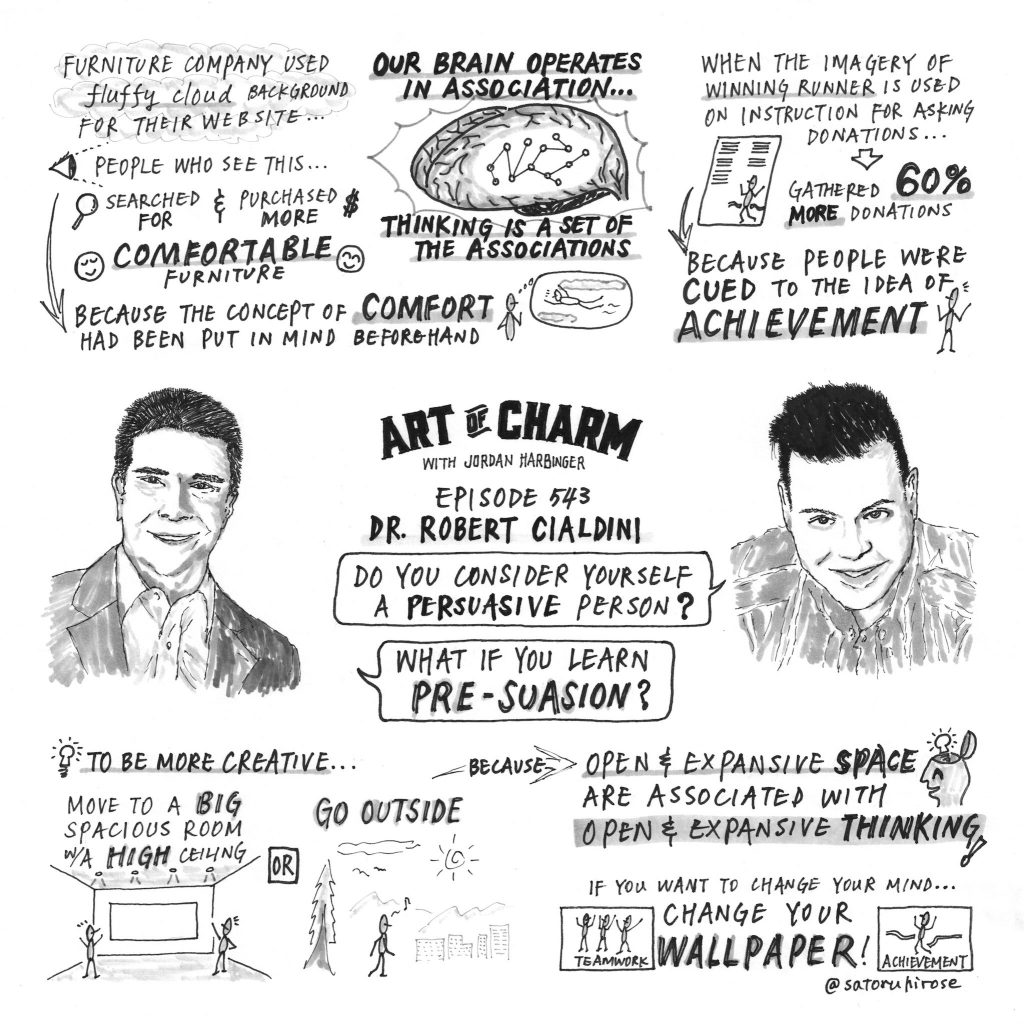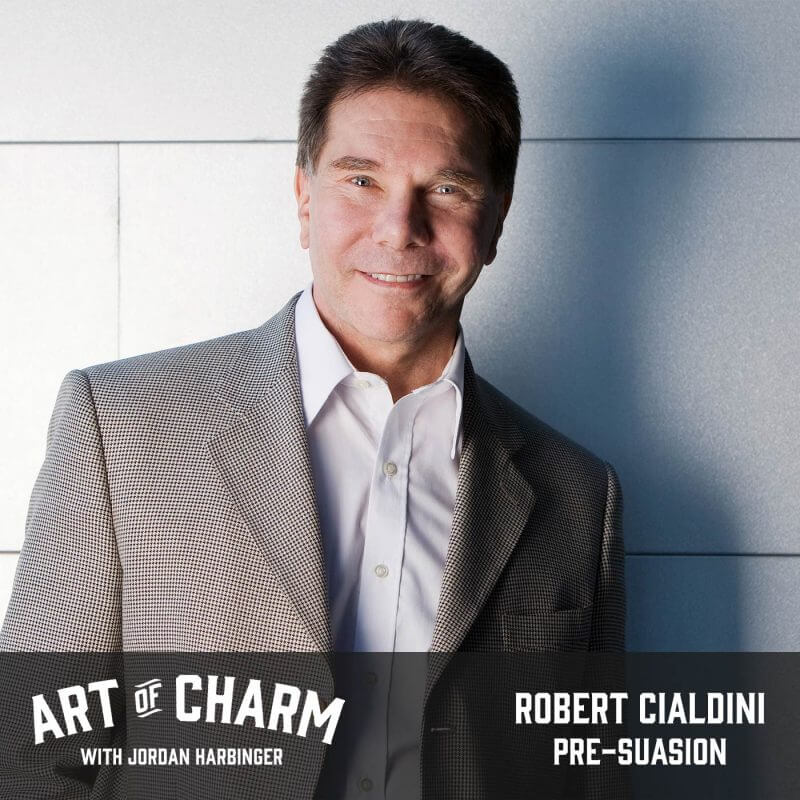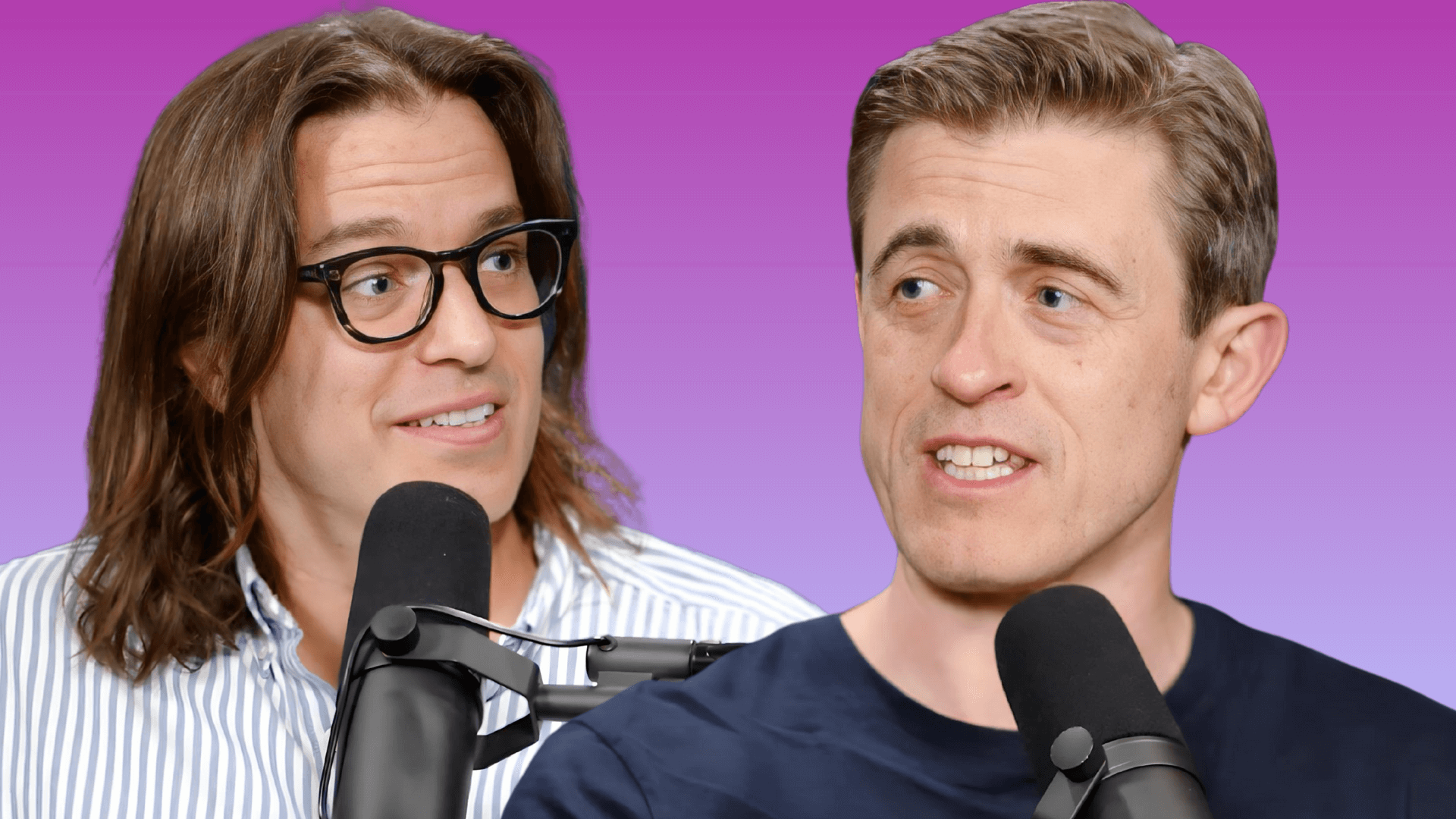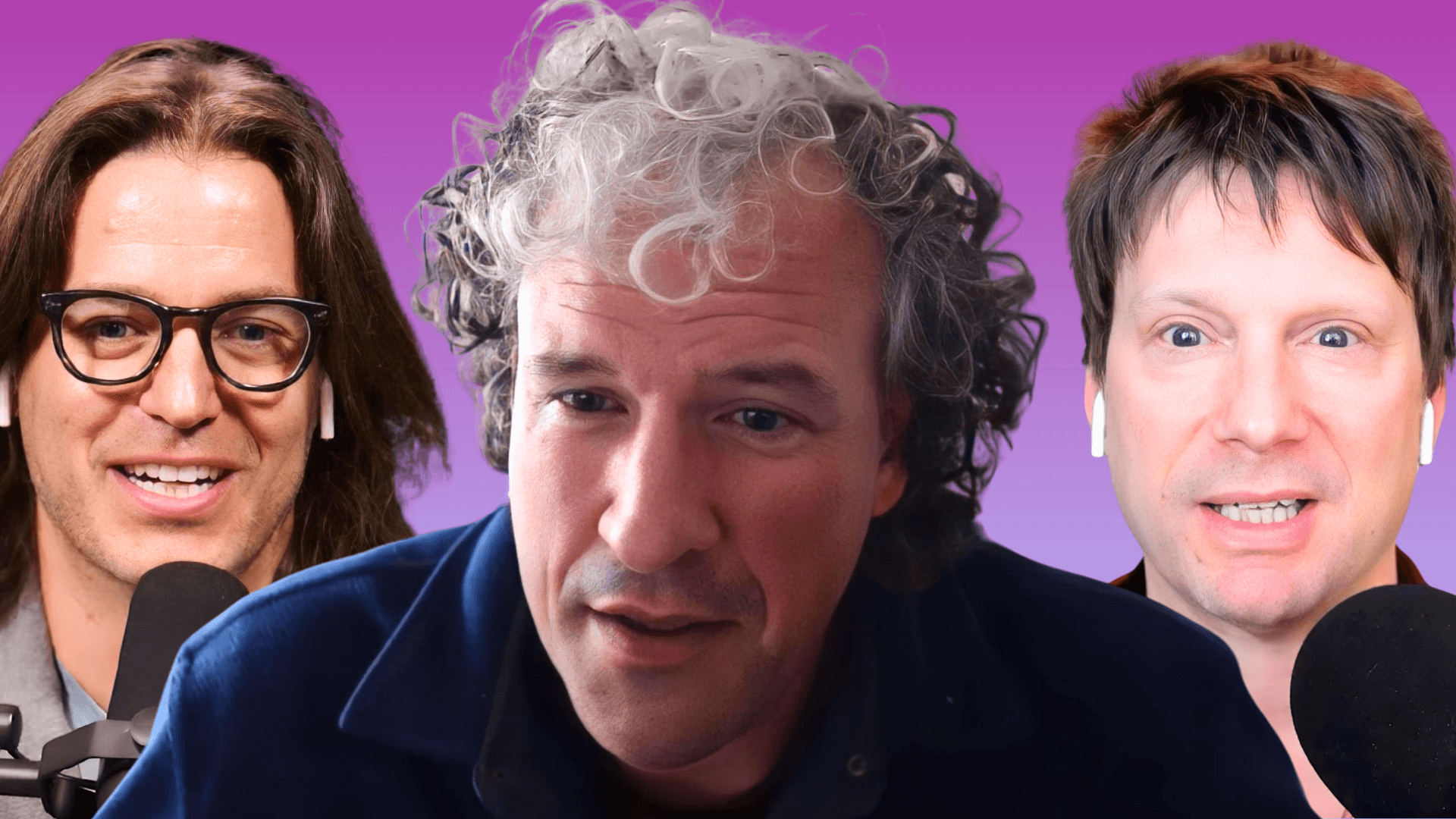Dr. Robert Cialdini (@RobertCialdini) is a speaker, consultant, and author of Influence: The Psychology of Persuasion and, most recently, Pre-suasion: A Revolutionary Way to Influence and Persuade.
The Cheat Sheet:
- What is “pre-suasion,” and how does it relate to the concepts inside influence?
- How persuasive people shape others’ behavior and how we can use these techniques on others — as well as ourselves.
- How to gain and retain someone’s attention.
- How language, geography, and imaging alter our perceptions of what causes events — and how the media uses these principles to influence us and set its agenda.
- How to increase our appeal by causing others to focus on us (and why this phenomenon often lands innocent people in jail).
- And so much more…
[aoc-subscribe]
Whether you’re a regular listener to The Art of Charm podcast or this is your first time here, chances are pretty good you’re curious about influence, persuasion, applied psychology, confidence, nonverbal communication, charisma, and magnetism. In fact, Jordan’s interest in the development of these as learnable skills was initially sparked years ago by picking up Influence: The Psychology of Persuasion, a book written by Dr. Robert Cialdini — our guest for today’s episode. It’s safe to say The Art of Charm might not exist as we know it today had it not been for this fortuitous early exposure to the core concepts found within.
Dr. Cialdini joins us today to discuss his new book Pre-suasion: A Revolutionary Way to Influence and Persuade. Will it inspire the next generation to approach social dynamics in a new light? Listen, learn, and enjoy this episode of The Art of Charm to find out!
Download Episode Worksheet Here

More About This Show
When he was just 13, Art of Charm co-founder and podcast host Jordan Harbinger remembers picking up a copy of Influence: The Psychology of Persuasion by Dr. Robert Cialdini. It was the first book he can remember reading of his own volition (i.e., it hadn’t been assigned by a teacher in school), and it introduced him to the world of social dynamics and the idea that anyone can learn the skills to positively control their impact on the people around them.
In his new book, Pre-suasion: A Revolutionary Way to Influence and Persuade, Robert writes about influence in a new light. “Pre-suasion,” he tells us, “is the practice of getting recipients sympathetic to your message before they experience it. That sounds like magic, right? It’s not. It’s established science.”
He explains further: “It happens by changing the state of mind that people are in before they receive your message that is aligned with that state of mind. The idea is to go to the moment immediately before you deliver your offer or your idea. Ask people to focus on a concept that is consistent with the idea that you will then present, and they will become more open to that idea — more receptive to it — because they’ve been sensitized to that material.”
The secret to this kind of persuasion doesn’t lie in the message itself, but in the moment before the message is delivered. It’s like setting a table to make the meal served upon it seem all the more delicious. The best influencers take a lot of time crafting what they do and say before they even make a request. So where does pre-suasion begin?
“Suppose you’re going to a job interview,” says Robert. “You know you’re going to present your case to a person or maybe even a set of people who are going to evaluate candidates. You’re going to be compared to other individuals. So you sit down and you’re ready to present your case — your credentials. Here’s what I’m going to recommend: before you do that, say, ‘You know, I’m very happy to be here, and I want to answer all the questions that you have of me. But before we begin, would you mind if I ask you a question? Why did you ask me here today? What was it about my resume that caused you to invite me in?’
“You know what they’re going to do? They’re going to go on record describing your strengths. And in that moment, everything you present about your strengths will be processed more easily — be more aligned with the mind state you have asked them to put themselves in — before you present your strengths.”
If you think about it from a sales perspective, you’re reversing the expected dynamic. You’re not convincing someone to buy or accept the qualities of you or your product; you’re having them supply the reasons why you or your product could best be of service to them. Rather than inviting resistance to the points of your presentation, you’re giving them the opportunity to really think about why you or your product are right for their needs.
“When you ask them to search into the reasons that brought you here and get them to make public commitments to them, they’re going to stay congruent with those commitments now.”
Listen to this episode of The Art of Charm in its entirety to learn more about backwards rationalizing and the congruency concept, how the idea of evidence-based decision making took a while to catch on, how the UK’s National Health Service got no-show appointments to drop by 18% by utilizing the psychology of voluntary commitment, why changing something seemingly simple on a business website’s landing page increases sales, how being attuned to the idea of achievement carries over to our real-world performance (and how this is quantified by neurological activity), the meaning and importance of privileged moments for making our ideas most favorable to others, how focus is perceived to have causal properties, how to go target “chuting,” and lots more.
THANKS, ROBERT CIALDINI!
Resources from This Episode:
- Pre-suasion: A Revolutionary Way to Influence and Persuade by Robert Cialdini
- Influence: The Psychology of Persuasion by Robert Cialdini
- Other books by Robert Cialdini
- Robert Cialdini’s website
- Robert Cialdini at Twitter
You’ll Also Like:
- The Art of Charm Challenge (click here or text 38470 in the US)
- The Art of Charm Bootcamps
- Best of The Art of Charm Podcast
- The Art of Charm Toolbox
- The Art of Charm Toolbox for Women
On your phone? Click here to write us a well-deserved iTunes review and help us outrank the riffraff!




